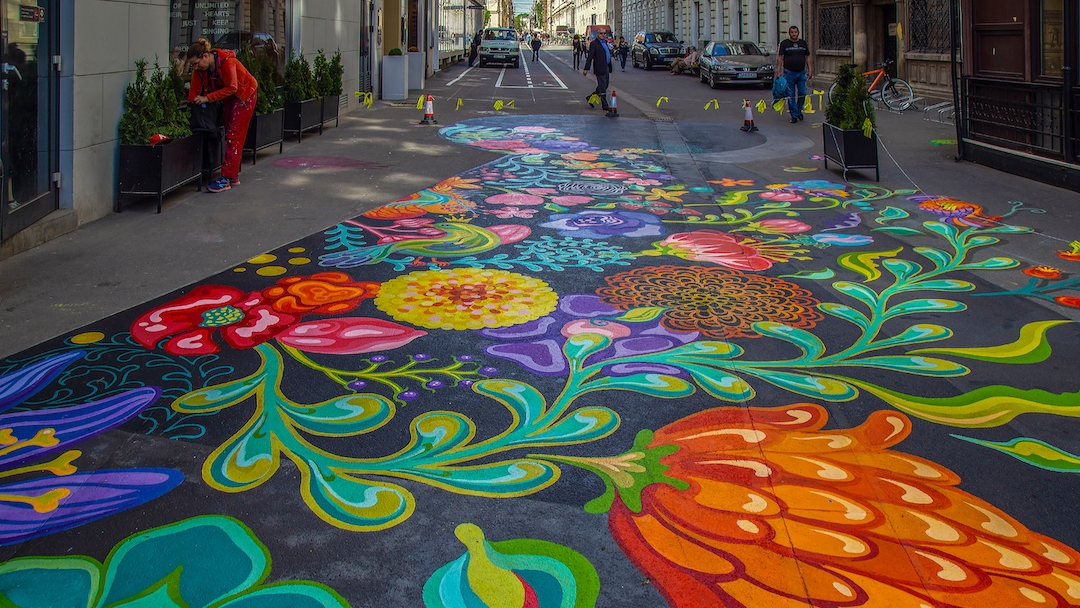Road Art Staves Off Traffic Accidents By 17%: Bloomberg Study
By Mikelle Leow, 24 Apr 2022

Photo 116898397 © Ioan Florin Cnejevici | Dreamstime.com
Art and function meet at an intersection when it comes to road safety, as a new study shows that murals can considerably drive down the rate of accidents.
These findings come from Bloomberg Philanthropies, which—under a project called the Asphalt Art Initiative—is making a case about enlivening public spaces with art, effectively doubling them up as safety signage thanks to a boost in vibrancy.
Asphalt art includes anything from “intersection murals and crosswalk art to painted plazas, or bridge underpasses,” says the charity, which has financially backed 42 artworks for roadways in the US and Europe.
The Federal Highway Association currently forbids the use of asphalt art as a form of road signage, with rare exceptions, Hyperallergic reports. Bloomberg Philanthropies believes this is partly to do with the lack of published research on the safety performance of roadway artworks.
In a self-conducted survey with Sam Schwartz Consulting, though, the nonprofit learned that public art has reminded drivers to slow down and look out for pedestrians or cyclists.
The firms looked at asphalt art sites across five states that have been adorned for at least two years, and discovered that there was a 17% reduction in total crashes compared to historical crash rates.
In addition, the study found that the rate of crashes involving vulnerable users like pedestrians was halved, and that injuries caused by crashes fell by 37%.
The report documents a shift in behavior between pedestrians and drivers too, with a significant 27% in the likelihood of drivers rightfully giving way to pedestrians, and a 38% reduction in pedestrians defying the walk signal.
With these inspiring findings, the nonprofit hopes lawmakers will acknowledge asphalt art as part of their road painting guidelines.
[via Hyperallergic and Bloomberg Philanthropies, images via various sources]





